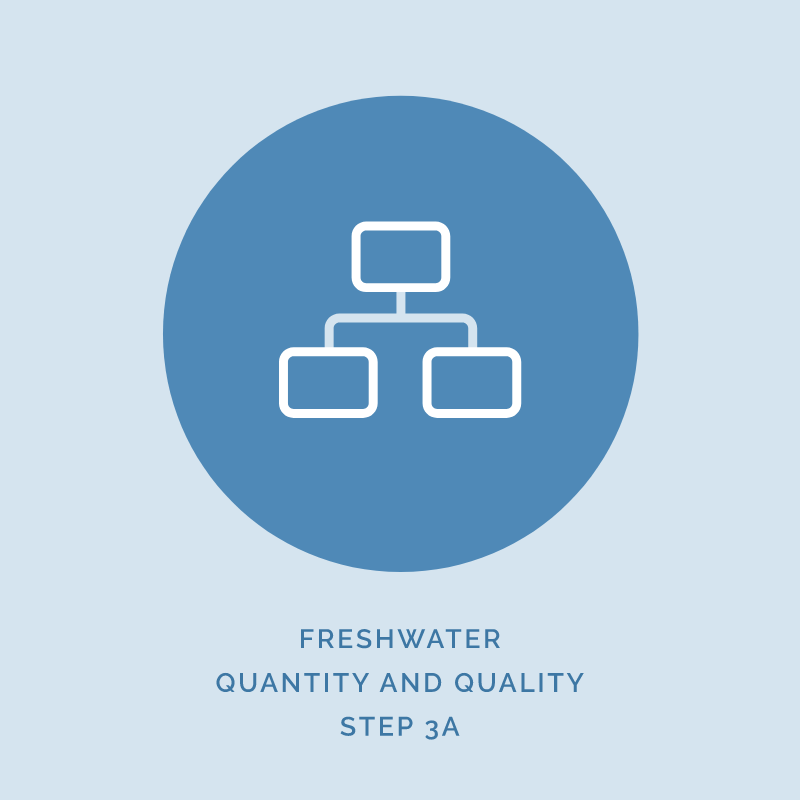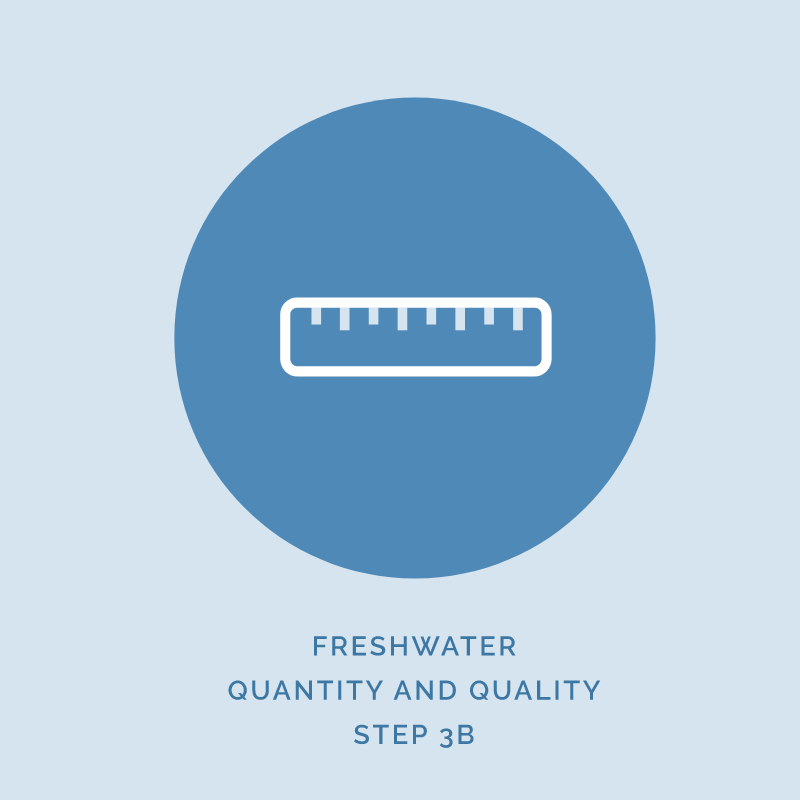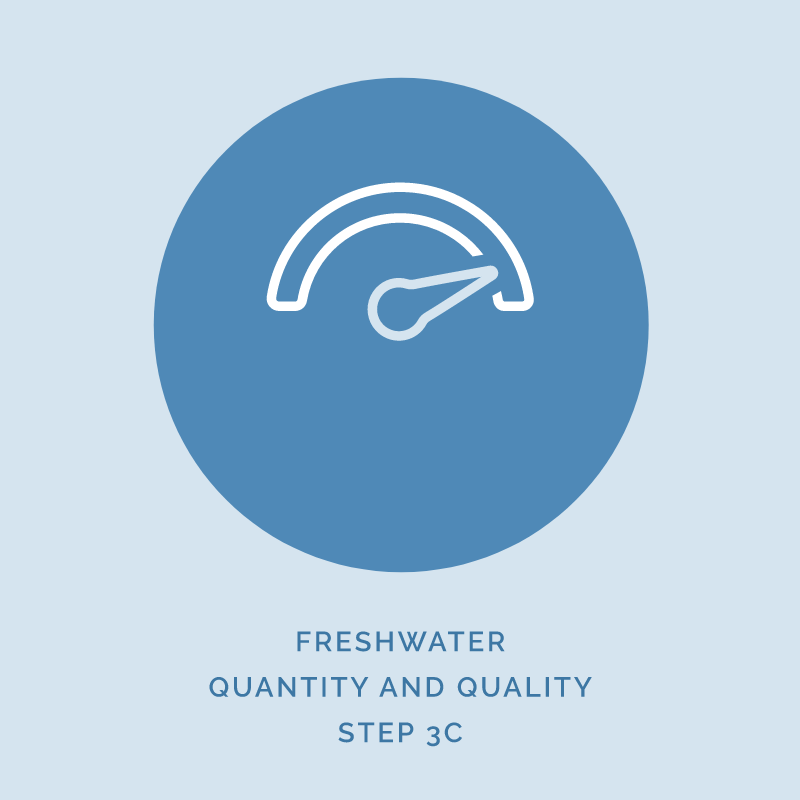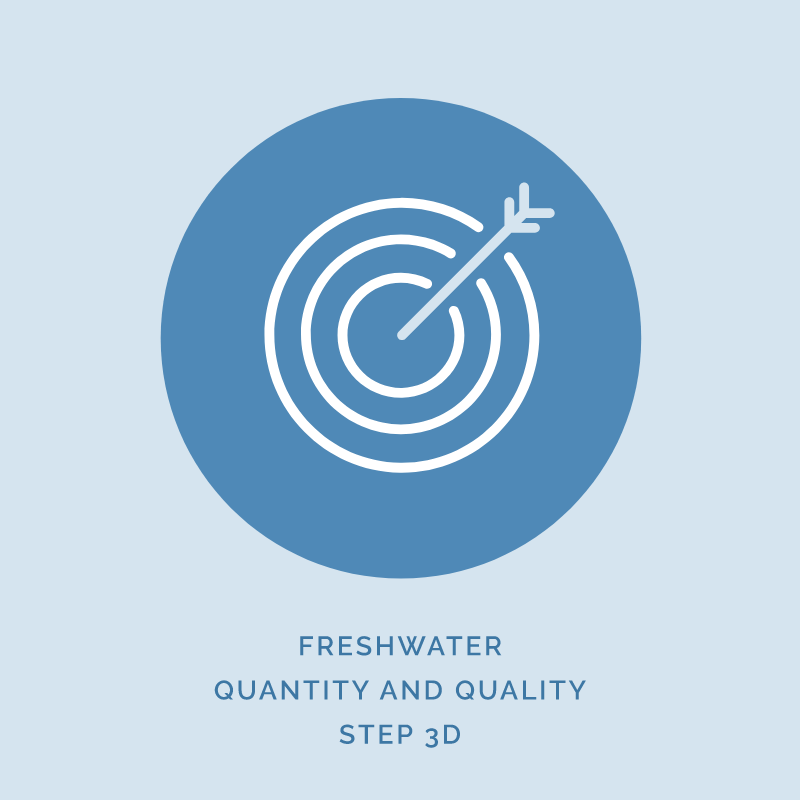Target setting process questions
Here we provide answers to common technical questions that companies have as they are going through the target-setting process.
After completing Step 3 Freshwater you will have:
The Step 3 Freshwater methods for freshwater quantity (water withdrawals) and water quality (nutrient loading) will help you define targets to reduce your environmental pressures on freshwater systems in accordance with the capacity of the environment and the current realities of human pressures on these systems. This approach will result in targets with the right ambition levels, grounded in science, rather than simply providing a general direction of travel.
More information on why freshwater science-based targets are important and how they connect to related corporate water stewardship initiatives can be found here.
After completing Step 2, you will have identified which of your sites have the most opportunities for positive impacts given several environmental, societal, and corporate factors. These sites will be located in particular basins, with unique hydrological conditions in terms of the volume and quality of the water flowing through the basin. Basins will also have different capacities to sustain environmental pressures, such as water withdrawals and nutrient pollutant loading (that you quantified earlier for your own activities), before compromising the health of the environment.
The main objectives of Step 3 Freshwater are: (i) to identify an appropriate hydrological model for the basin and then to use this model to determine the basin-wide reductions to water withdrawals and nutrient loading required to safeguard the health of the basin; and (ii) to define your own company’s pressure reduction targets by applying the equal contraction of efforts allocation approach.

Step 3a, the hydrological model selection, consists of a consultation process with stakeholders resulting in the identification of an appropriate hydrological model, local or global, to use to set targets in the basin.
Step 3b, the baseline pressure calculation, partially draws on the environmental data acquired in Step 1. The main objective is to identify any other activities located in the same basin and to aggregate the pressures coming from all of them so that the targets cover all of your activities in the area.


Step 3c, the environmental thresholds identification, uses the models identified in Step 3a to understand conditions of the basin, and the models estimate how much environmental pressures should be reduced at the basin level to safeguard ecological processes.
Step 3d, the freshwater target setting, is the step in which you define your company’s targets. You do this by applying the basin-wide required reductions to your own baseline pressures for the basin.

Hydrological models used in Step 3 Freshwater
As explained in the Step 3 Freshwater methods, appropriate models are used to help understand the unique context of each basin regarding its water quantity and water quality. Within each of these pressure categories, SBTN distinguishes two types of models: global models and local models.
Global models allow wider application of the method due to greater spatial coverage. The availability of local models and thresholds is more sparse, but they provide better accuracy when setting targets.
SBTN requires companies to identify appropriate local models for their top-priority basins. Companies need to consult national and local stakeholders to identify these models, and the first tasks of the Step 3 Freshwater methods explain this search process.
SBTN has also identified and provided global models for water quantity and water quality that can be used in locations that are ranked lower in your prioritization and/or do not have local models available (you will find these in Task 5).
Help and resources